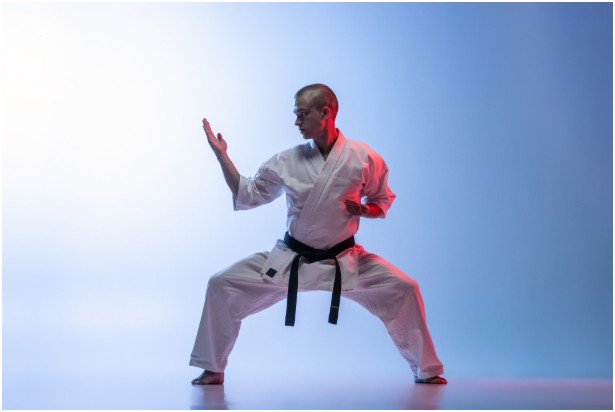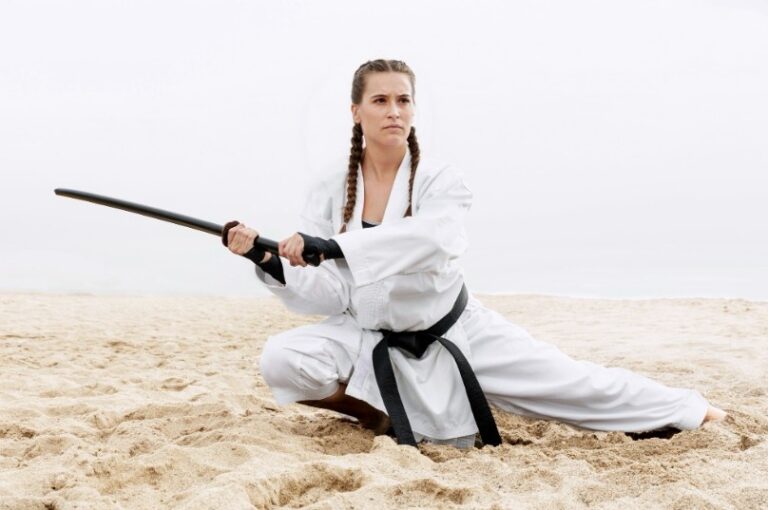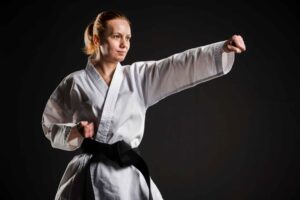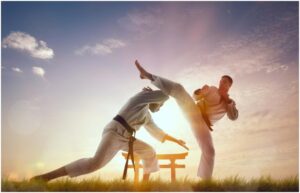Taekwondo is more than just powerful kicks and sharp punches. One of the core principles of the martial art lies in the stances. These stances form the foundation of all movements in Taekwondo, providing balance, power, and control.
In this post, I’ll guide you through all the important Taekwondo stances, explain their purpose, and show how mastering them can significantly improve your technique.
Why Taekwondo Stances Matter
When I first started Taekwondo, I underestimated the power of stances. I thought they were just for standing still.
But I quickly learned that the right stance is critical for proper form, balance, and ultimately, the success of your kicks and punches.
Each stance serves a unique purpose, whether it’s for defending yourself or preparing to strike. By understanding and practicing these stances, you’ll improve your power, speed, and agility in Taekwondo.
All 17 Taekwondo Stances You Should Know
1. Walking Stance (앞서기 Ap Seogi)
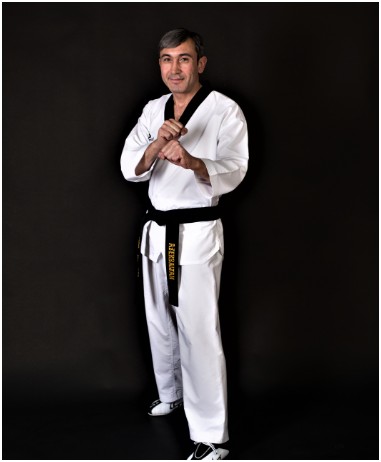
One of the most fundamental stances in Taekwondo, the walking stance, is essential for moving fluidly while maintaining balance. It’s not just about walking; it’s about positioning your body correctly to allow for quick transitions between attacks and defense.
In this stance, one foot steps forward, with the back leg bent slightly. The front leg remains straight, ensuring you’re stable while maintaining mobility. You’ll often use this stance when advancing toward an opponent or transitioning into another move.
2. Attention Stance (차렷 Charyeot)
The attention stance is used in formal settings, such as when you’re bowing to your instructor or before beginning a pattern. In this stance, your feet are together, arms are by your side, and your back is straight. It’s a posture of respect and focus.
I remember my first time in Charyeot, and how it felt to simply stand still and focus my mind before each training session. It helped me understand the importance of mental discipline in martial arts.
3. Back Stance (뒷굽이 Dwi Kubi)
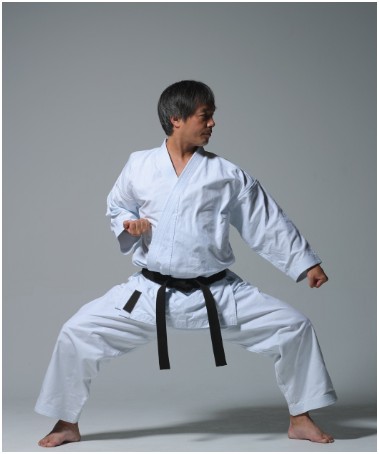
The back stance is designed for defensive moves, such as blocks or counterattacks. It’s a posture where most of your weight is on your back leg, with the front leg slightly bent and facing outward.
This stance provides stability and power, helping you quickly react to your opponent’s moves. I find it incredibly effective for blocking and then launching a counterattack in one fluid motion.
4. Close Stance
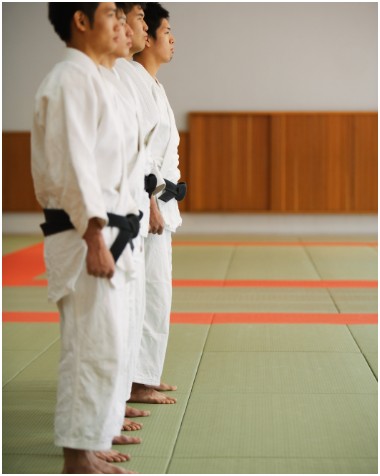
In a close stance, your feet are together with your arms placed naturally by your side. This stance is often used as a resting stance or in preparation for more complex moves.
5. Parallel Stance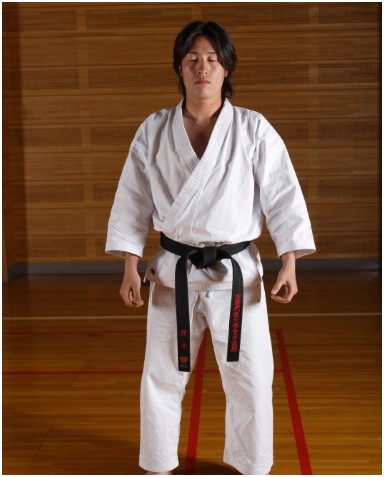
The parallel stance, where both legs are shoulder-width apart and facing forward, is excellent for stability and balance. It’s commonly used for preparing for strikes or to maintain a solid defense.
When I practiced this stance, I felt grounded and more aware of my surroundings—making it a great stance for any Taekwondo practitioner.
6. Sitting Stance
Sitting stance is a low, stable stance, often used in blocking techniques in taekwondo and as a foundation for certain patterns. It’s great for building leg strength and endurance.
In this stance, your legs are bent at a 90-degree angle, and your weight is evenly distributed. As a beginner, I found it challenging at first, but over time, it helped me build better posture and endurance.
7. L stance
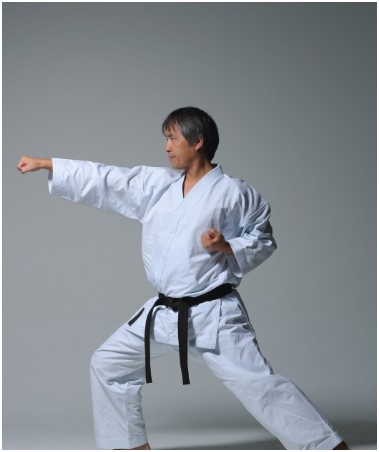
The L stance is a defensive stance where one foot is placed in front of the other, forming an “L” shape. This stance is used to prepare for various blocks and counterattacks.
8. Diagonal Stance
This stance involves positioning your body at an angle to your opponent, providing a more defensive approach. It’s great for blocks, as you can easily transition into an attack from this position.
9. Fighting Stance
The fighting stance is about agility and readiness. Your feet are positioned shoulder-width apart, with one leg slightly forward, ready for both attack and defense. This stance helps you react quickly to your opponent’s movements, giving you the advantage in any sparring session.
10. Front Stance (앞굽이 Ap Kubi)
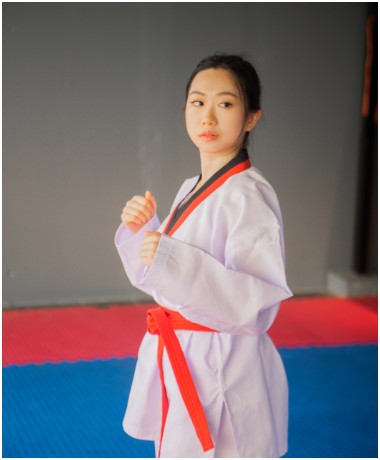
The front stance is one of the most important stances in Taekwondo. In this stance, you step forward with one leg bent, while the other leg remains straight. Your body weight is evenly distributed, and it’s often used for delivering powerful strikes.
When I first tried the front stance, I found it both powerful and stable. It’s the perfect stance for executing forward strikes like punches or kicks.
11. Horse Stance
The horse stance is often used in training for strengthening the legs. In this stance, you spread your feet wide and squat low, engaging your core and legs. It builds endurance and is excellent for practicing lower body strength.
12. Tiger Stance
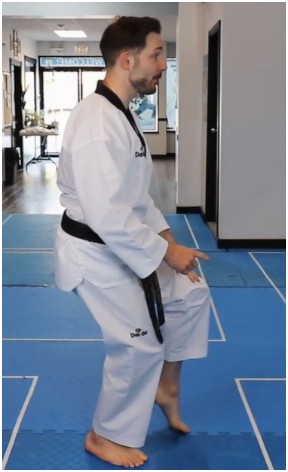
Image Credit- TaekwondoShawn
The tiger stance involves a wide stance with one knee bent deeply while the other leg remains straight, almost as if you’re about to pounce. It’s perfect for quick strikes and transitioning into other moves.
13. Vertical Stance
A less common but very effective stance, the vertical stance is designed to offer flexibility and agility. In this stance, one leg is bent, while the other is straight, with both feet positioned forward.
14. Fixed Stance
The fixed stance is about stability. One foot is placed forward while the other foot remains firmly planted behind. This stance is typically used for blocking or absorbing impact.
15. Forward Stance
As the name suggests, the forward stance is used when advancing toward your opponent. It’s a balanced and strong stance that supports swift forward movements.
16. Bending Stance
This stance is used for quick, fluid movements, often transitioning into another position. It requires a high degree of flexibility and is useful in more advanced techniques.
17. Crane Stance (학다리서기)
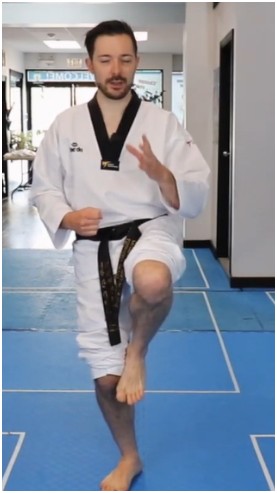
The crane stance is one of the most iconic stances in Taekwondo. It involves standing on one leg, with the other leg lifted and bent at the knee. This stance tests your balance and stability, as well as your ability to hold the position before transitioning into a kick or strike.
Conclusion: Mastering Taekwondo Stances
Each of these stances has its own unique purpose in Taekwondo, and mastering them takes time and practice. Whether you’re a beginner or an experienced martial artist, focusing on your stances is crucial for improving your technique.
By practicing each of these stances regularly, you’ll not only build your strength and balance but also gain a deeper understanding of Taekwondo as a whole. So, get on the mat, take a stance, and see the difference it makes in your practice.





